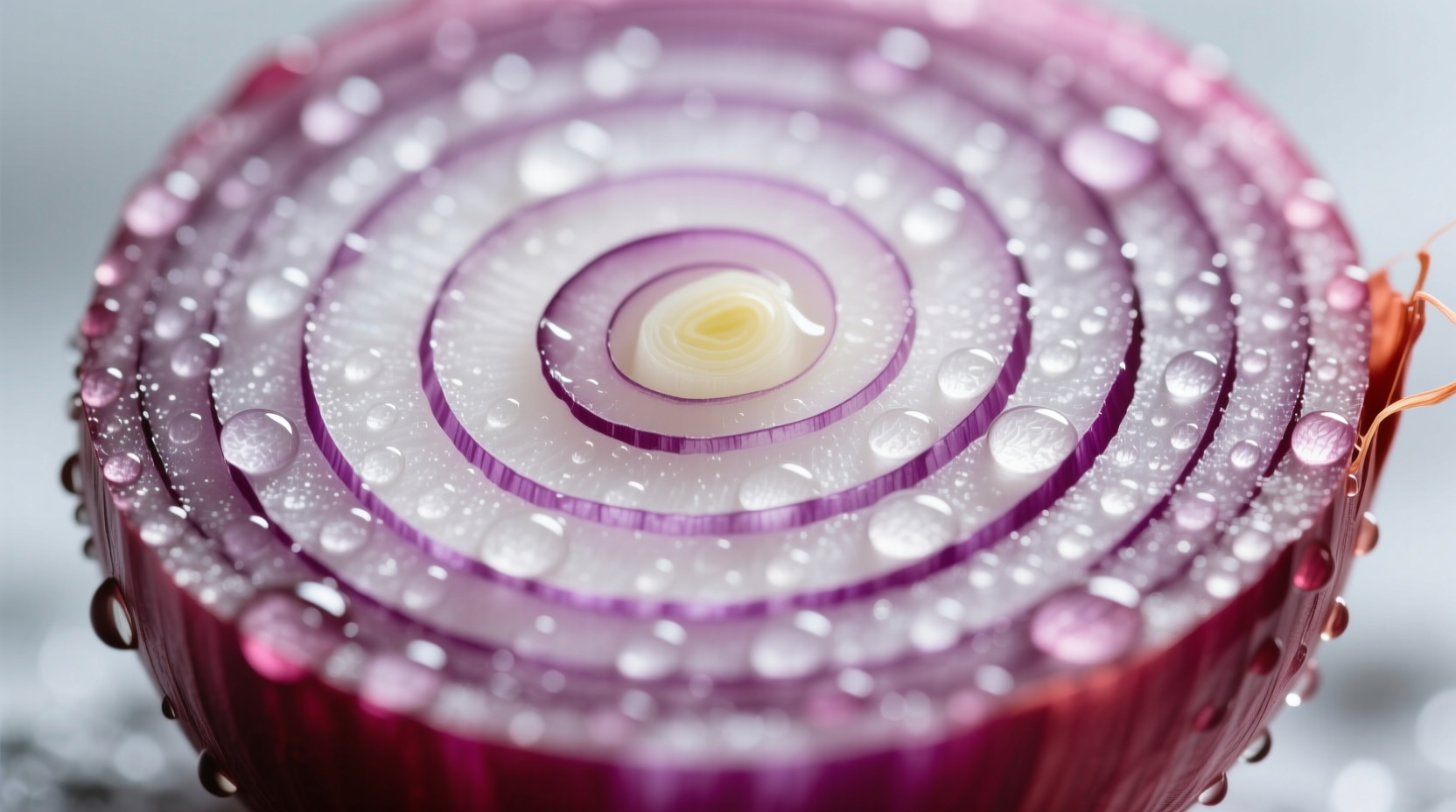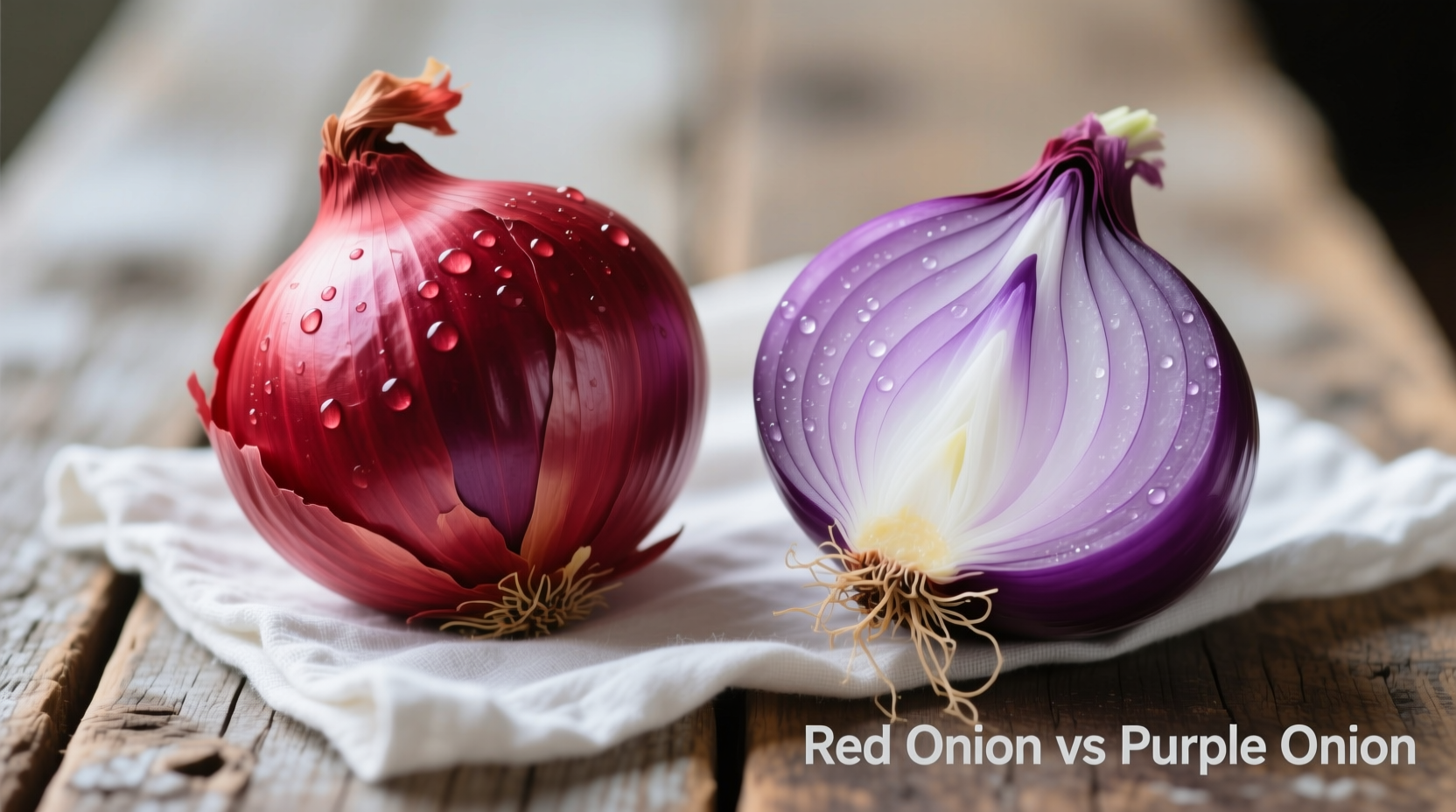Confused about whether red onions and purple onions are different? You're not alone. Many home cooks waste time searching for two separate ingredients when they're actually the same vibrant allium. This definitive guide cuts through the naming confusion with botanical facts, flavor profiles, and practical cooking applications that will transform how you use this essential kitchen staple.
The Naming Confusion Explained
Despite common belief, red onions and purple onions refer to the exact same onion variety (Allium cepa var. rubrum). The dual naming stems from regional language preferences and marketing choices rather than any botanical distinction. In the United States and Canada, "red onion" dominates culinary terminology, while "purple onion" appears more frequently in European markets and scientific literature. Food scientists at the University of California note that the perceived color difference depends on lighting conditions and individual color perception—what one person calls deep red, another describes as purple.
Visual Identification Guide
These onions feature distinctive deep reddish-purple skin with concentric rings of white and purple when sliced. The intensity varies by growing conditions:

Unlike yellow or white onions, red/purple varieties maintain their color when cooked, making them ideal for dishes where visual appeal matters. The USDA Agricultural Research Service confirms that anthocyanins—the same pigments in blueberries and red cabbage—create this characteristic hue while providing antioxidant benefits.
Flavor Profile Comparison
Red/purple onions deliver a unique flavor experience:
- Raw application: Noticeably sharper and more pungent than yellow onions, with a pleasant peppery finish
- Cooked application: Mellow significantly, developing subtle sweetness while retaining color
- Aftertaste: Less lingering sulfur notes compared to yellow varieties
Chef Antonio Martinez of the Culinary Institute of America explains: "The higher sugar content in red onions creates beautiful caramelization, but their delicate flavor disappears with prolonged cooking. For best results, add them in the last 5-7 minutes of cooking."
Culinary Applications Matrix
| Application | Red/Purple Onion Performance | Pro Tips |
|---|---|---|
| Raw in salads/salsas | ★★★★★ | Soak in ice water for 10 minutes to reduce sharpness |
| Pickling | ★★★★★ | Creates vibrant pink pickles; maintains crunch better than yellow onions |
| Grilling | ★★★☆☆ | Use thick slices to prevent disintegration; pair with robust meats |
| Soups/stews | ★★☆☆☆ | Add in last 15 minutes to preserve color and flavor |
| Caramelizing | ★★★☆☆ | Requires 25-30 minutes; develops complex sweet-tart flavor |
Nutritional Profile and Health Considerations
According to USDA FoodData Central, red/purple onions contain 20% more anthocyanins than yellow varieties, contributing to their superior antioxidant capacity. A medium red onion (110g) provides:
- 46 calories
- 11g carbohydrates
- 2g dietary fiber (8% daily value)
- 10mg vitamin C (11% daily value)
- Significant quercetin content with anti-inflammatory properties
Research published in the Journal of Agricultural and Food Chemistry confirms that the anthocyanins in red onions remain stable during cooking, unlike many other vegetables where heat destroys beneficial compounds. However, individuals with sensitive digestive systems may find raw red onions more irritating than cooked versions due to their higher sulfur content.
Smart Substitution Guide
When your recipe calls for red/purple onions but you have alternatives available:
- Best substitute for raw applications: Shallots (use 1:1 ratio) provide similar sharpness with more delicate flavor
- Best substitute for cooked applications: Yellow onions (use same quantity but add 1 tsp vinegar to mimic tartness)
- Never substitute when color matters (salsas, pickled onions, garnishes) as other varieties won't provide the visual impact
Professional chefs recommend keeping red/purple onions in a cool, dark place for up to 4 weeks. Unlike yellow onions, they shouldn't be refrigerated until cut, as cold temperatures accelerate spoilage. Once sliced, store in an airtight container for 7-10 days.











 浙公网安备
33010002000092号
浙公网安备
33010002000092号 浙B2-20120091-4
浙B2-20120091-4